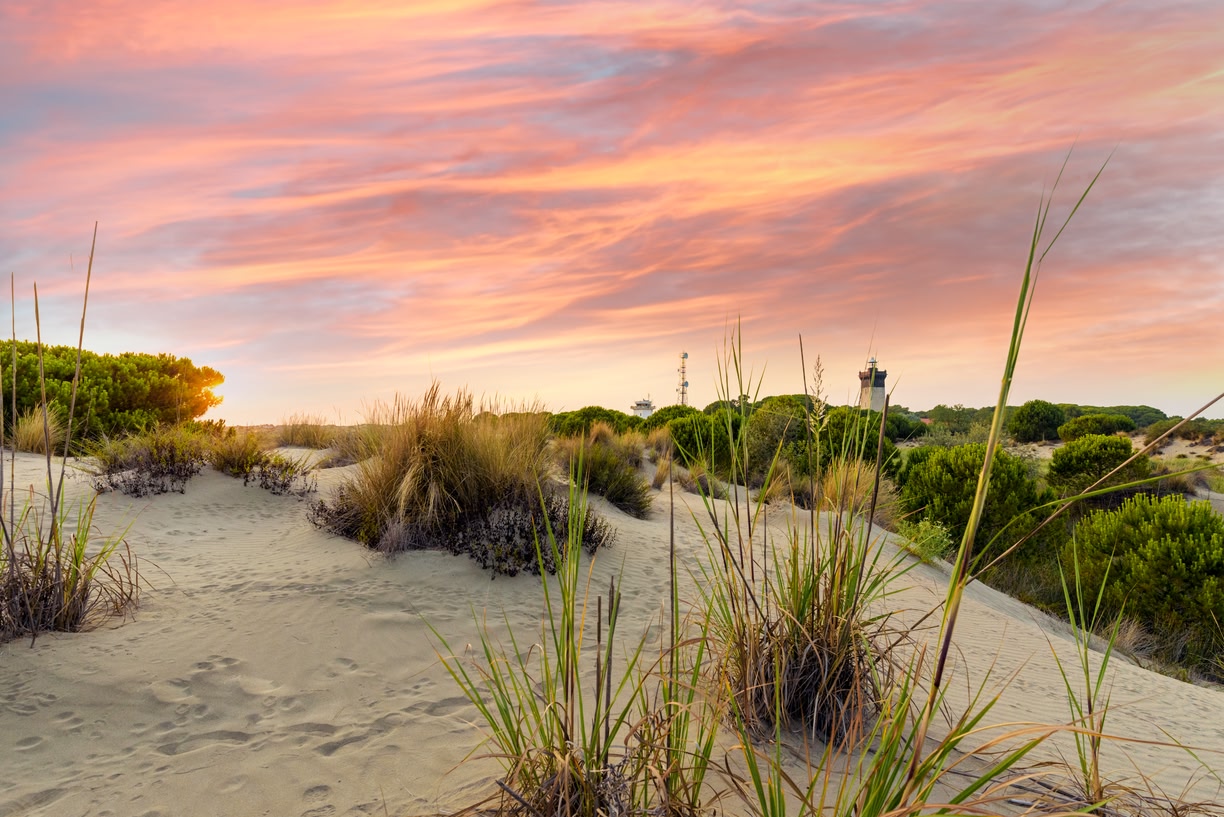In Partnership with Atout France
Languedoc-Camargue brings together all the reasons why southern France is one of the UK’s (and the world’s) favourite travel spots. In the south-eastern Occitanie region that meets the Mediterranean Sea, its picturesque stone cities like Montpellier, Nîmes and Carcassonne blend ancient Roman architecture with modern, vibrant living.
Outside the city limits you’ll see some of the most iconic landscapes in France. And Occitania is home to almost a quarter of France’s UNESCO World Heritage sites, boasting eight in total.
Head to Languedoc-Camargue for a trip back in time, where you’ll also get to play on golf courses, soak in thalassotherapy spa centres, and participate in watersports from diving in the Cap d’Agde to canoeing in the Gorges de l’Hérault. Here are a few more reasons why the Languedoc-Camargue should be on your must-go travel list.
1. Climate
The Languedoc-Camargue region is blessed with 300 days of sun each year – a near-perfect holiday climate which reaches around 30C in July and never goes beneath 12C in the depths of wintry January. It sets the scene perfectly for the multitude of outdoor activities that you can enjoy along this 100km sandy stretch of Mediterranean coast.
Start in La Grande-Motte, a 70s seaside resort built in a futuristic style inspired by the Mayan pyramids. The angular buildings rise up from a curve of biscuit-crumb sand, beside a harbour that’s chock-a-block with white sailing boats and small, cream-coloured fishing vessels.
Then there’s Cap d’Agde, a Languedoc resort town southwest of Montpellier, which was built at the foot of an ancient volcano and is now loved for its beautiful beaches. From the family-friendly, long swathes of sand at Rochelongue and Richelieu to the grey-black volcanic sands of La Grande Conque and the untamed bays of Espiguette, the variety of beaches here is practically unparalleled. Not to mention the diving spots in the old volcanic crater, where you can spot octopus, squid and anemones.

2. Historical cities
Some of southern France’s most historic and picturesque towns and cities are found in Languedoc-Camargue. Palm tree-lined Nîmes is bursting with Roman history, with a 2,000-year-old temple and a twin-tiered amphitheatre that’s the best-preserved Roman ruin in France. Dating to 100BCE, it could sit 24,000 spectators in its heyday of brutal gladiator fights. Nowadays, it’s a unique venue for concerts and events (although you can still view gladiatorial armour replicas in the attached museum).
Then there’s Montpellier, a stylish city that doesn’t have Roman heritage (unusual in Languedoc-Camargue) but instead has grand mansions, wide boulevards and white-sand beaches, brought to life by its multicultural and student-friendly population. Not to mention Uzès, easily one of France’s prettiest towns, where Roman history (don’t miss the breath-taking Pont du Gard aqueduct) meets Renaissance palaces and mansions.

3. Unspoilt countryside
Languedoc-Camargue is home to some of France’s most iconic countryside and wildlife, from the flamingos that soar in the skies over Espiguette beach to the indigenous, wild horses that roam the Wetlands of Camargue.
Head to the Camargue Biosphere Reserve for a crash course in what the natural world here has to offer. The network of lagoons here between the Rhône River and the Mediterranean Sea make this one of Europe’s most important wetlands, where 272 species of birds fly between the grasslands, salt marshes, freshwater pools, dunes and woods. It’s the only place in Europe where flamingos nest.
Then there’s the Causses and Cévennes, a mountainous region of narrow valleys and medieval road systems; one of Europe’s deepest canyons, the Gorges du Tarn; and barge trips down the iconic Canal du Midi, lined with plane trees.

4. Festivals
The Languedoc-Camargue region has been inhabited for millennia, meaning that it’s a land rich in ancient customs, traditions and folklore – as well as a growing multicultural population. Each town and village has its own celebrations, many of which feature horses and bulls – animals that have always been important to the region’s culture.
The major port city of Sète hosts an annual festival that dates back to medieval times, and is a must-see if you find yourself nearby each August. For one week that month, the festival of Saint Louis holds a jousting tournament that’s taken place here since 1666. Watch them from the water’s edge, as the jousters face each other on canoes rather than horses.

5. Cuisine
You’re guaranteed to eat well in the Languedoc-Camargue region. Start at the Uzès farmers market, twice weekly on Wednesdays and Saturdays on the Place aux Herbes. Dating back to the 1241, the market is an incredible introduction to southern France’s perfect produce: emerald-green olive oil, glossy fruit and vegetables, fresh goat’s cheese and local dried sausages all vie for your attention. If you happen to be there in January, you’ll be treated to the earthy spoils of truffle season, and the town’s quintessential sweet – liquorice – can be chewed on year-round.
But don’t stop there. The fortified, hilltop town of Carcassonne isn’t just famous for its pristine, medieval architecture. It’s also the birthplace of cassoulet – a slow-cooked, pork sausage and lingot bean stew, enriched with confit duck and served in a terracotta dish. Pair it with a red wine from nearby Corbières to indulge just as the locals do – or head to the coast to tuck into exceptional seafood, like Tielle Sétoise (octopus pie) in Sète, Bouzigues oysters or oven-baked cod from Nîmes.

Visit the Languedoc-Camargue region, steeped in history, culture and some of France’s best food, by searching for flights, hotels and car rentals on Skyscanner.
